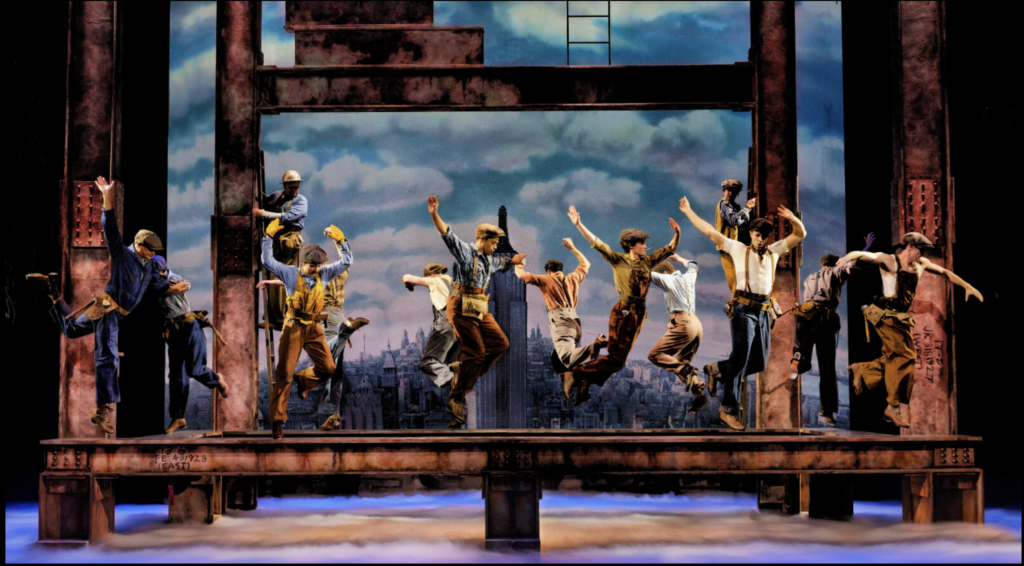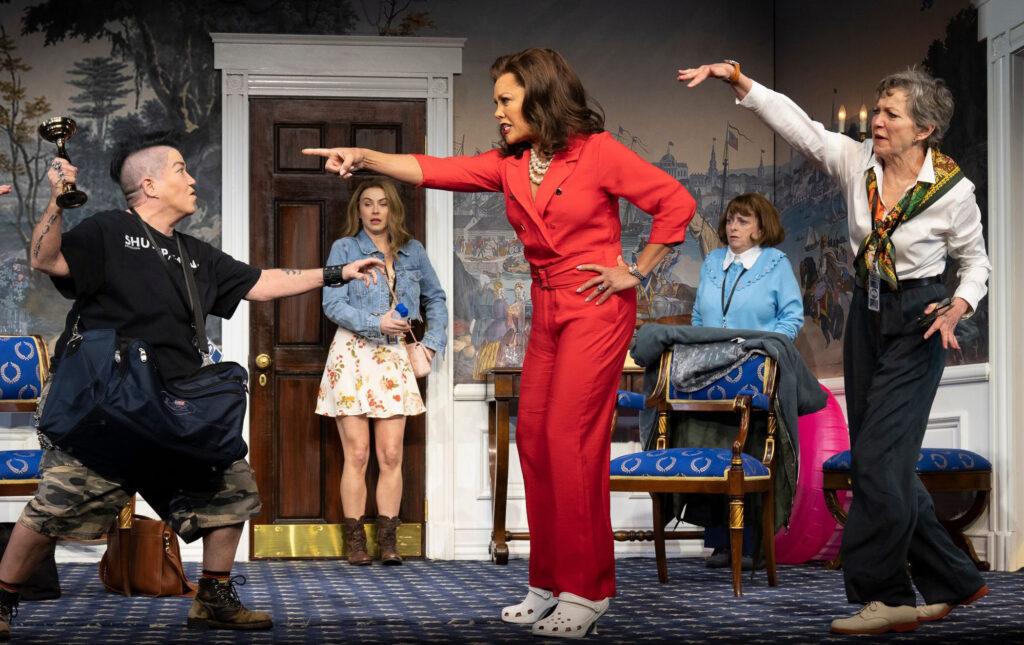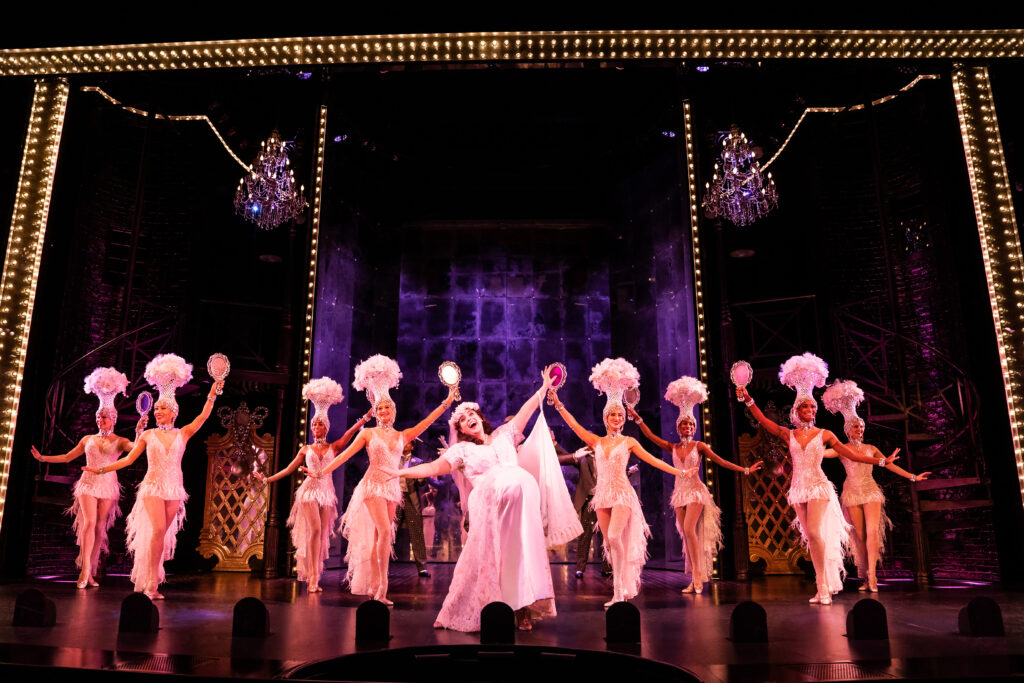[ad_1]
Join a musical theater dance class and also you’ll doubtless see a well-recognized mixture of isolations and excessive kicks, shoulder rolls and chassés. However that may not put together you for the precise dancing displaying up on at this time’s Broadway phases, which not suits into any neat Michael Bennett–or Jack Cole–impressed bins.
Broadway choreography has lengthy been an amalgam of various social dances and kinds like jazz, faucet, and ballet. However at this time’s exhibits are more and more utilizing motion makers from genres exterior the musical theater world altogether, like experimental dance (David Neumann, Annie-B Parson, Raja Feather Kelly), business dance (Sonya Tayeh, JaQuel Knight, Keone and Mari Madrid), fashionable dance (Camille A. Brown), and bodily theater (Steven Hoggett).
“There’s an entire cadre now of choreographers who by no means had been in a Broadway present, who by no means danced in A Refrain Line,” says veteran Broadway journalist Sylviane Gold. “And so they’re bringing one thing totally different.”
Historically, musical theater dance had “inventive aspirations however with in style enchantment,” says Appalachian State College professor Ray Miller, creator of Dance on the American Musical Theatre Stage. Broadway is, in any case, a for-profit enterprise. Whereas at this time’s musical theater choreographers nonetheless face strain to promote tickets, these coming to Broadway from different traditions are generally much less oriented towards recognition. And that may result in extra risk-taking.
For example, when Neumann choreographed Hadestown, he introduced the narrative to life by leaning into abstraction and subtlety, creating easy actions—like unfastened, rhythmic strolling—that had a magnetic pull. “I don’t wish to dictate the viewers’s complete expertise,” Neumann says. “I need them to lean in and turn into curious.”


It’s not simply the steps which have modified. The function dance performs in musicals has additionally shifted. “Theater choreography was once extra about literal storytelling,” says longtime Broadway choreographer and director Susan Stroman. “Right now the choreography is extra about ambiance, capturing the essence of the emotion that’s taking place onstage, whether or not it’s rigidity or romance.” She credit Andy Blankenbuehler’s work on Hamilton and Camille A. Brown’s Choir Boy particularly for spurring this improvement.
This extra summary strategy has meant much less choreography that includes characters dancing as people and extra collective ensemble motion, says Stroman. When somebody does escape for a solo, “the choreography at this time has unbelievably fascinating and really intricate steps,” Stroman says—a development that may replicate the distinctive showmanship of social media dance. “Youthful choreographers are capable of faucet into video and TikTok and Instagram, the place steps are largely the celebs,” Stroman says.

The 2020 sea change additionally had an affect. Since COVID-19, older viewers members—who bought used to safer and extra handy leisure choices—have turn into less-dependable ticket consumers, says Stroman. Which means producers are generally prepared to take an opportunity on one thing totally different, hoping to attract in youthful audiences. And following huge pushes from social justice actions, producers are additionally hiring administrators from a wide range of backgrounds, who’re in flip looking for out choreographers from totally different genres—which is altering the kind of motion that finally ends up onstage.
“We’re telling extra numerous tales,” says Ellenore Scott, who choreographed Broadway’s Humorous Woman and Mr. Saturday Evening in 2022. “We’re utilizing voices that weren’t heard again within the Nineteen Forties, Nineteen Fifties.”
And a wider array of inventive views—each on Broadway and properly past it—is a part of the trail to progress. As Neumann says, “An artwork type is just as sturdy because the variety of voices capable of inform tales and converse by way of their explicit bizarre proclivities.”



What About Faucet Dance?
Faucet dance has been an integral part of Broadway dance because the nineteenth century, and way back to the late 1700s dancer John Durang introduced soft-shoe–fashion components to the Nice White Means, says historian Ray Miller. By the Nineteen Thirties, musicals like Something Goes and the unique movie model of forty second Road had been chock-full of crowd-pleasing faucet numbers. However the iconic style is not an anticipated staple of latest musicals.
“Faucet’s function stored altering as musicals modified,” says arts author Sylviane Gold. “Right now, faucet generally is a specialty quantity that’s thrown right into a present with a wink, as a little bit present to the viewers, although it’s clearly misplaced—as in Aladdin. It may be used as a dramatic factor—as when the Irish and Black characters in Paradise Sq. stage a faucet problem.”

Choreographer Susan Stroman factors out that there are fewer huge ensemble faucet numbers at this time: “It’s extra concerning the power of a person faucet dancer popping out and starring in a second.”
The fashion of faucet has additionally developed. The standard up-on-your-toes choreography is being changed not solely by grounded, hip-hop–impressed hoofing, but in addition by extra advanced steps and rhythms. “I believe individuals are ravenous for extra fascinating rhythms, a brand new method to do one thing that’s previous, making an attempt to take one thing we’re acquainted with and flip it on its head,” says Stroman.
Faucet dance isn’t going away anytime quickly. “So long as there are Broadway musicals, there can be some sort of faucet,” predicts Gold. “Nevertheless it gained’t essentially be carried out by an ensemble doing time-steps in dazzling unison.”
The place May (or Ought to) Broadway Choreography Go Subsequent?
“I get excited by issues like American Utopia which are actually off the overwhelmed path. I need choreography to be extra inclusive and to say, ‘This may work, and this,’ searching for other ways to share what we take into consideration our expertise being alive on the planet.”
—David Neumann,
choreographer
“I’d love Broadway to take an opportunity on the dance narrative, prefer it did at one time after I was capable of do Contact or Twyla Tharp was capable of do Movin’ Out.”
—Susan Stroman,
director and choreographer
“Simply present me one thing I haven’t seen earlier than. That’s what excites me. And that’s to not say that it isn’t completely great to see one thing acquainted dropped at a brand new stage of execution or excellence. However theater is about sitting within the viewers and being stunned.”
—Sylviane Gold, arts author
“I hope that Broadway inventive groups take possibilities on totally different types of motion as a method to inform a narrative. You possibly can have one script and inform it 1,000 other ways relying on how that present is choreographed and staged and directed.”
—Ellenore Scott, choreographer
“Straight performs are starting to concentrate to ecology, and I’m positive that it’s going to occur on the musical stage, too. We now have the skills and the instruments to create musicals that deal with local weather and different environmental issues. We want extra tales to assist us to conceive extra sustainable methods of being.”
—Ray Miller, historian

[ad_2]